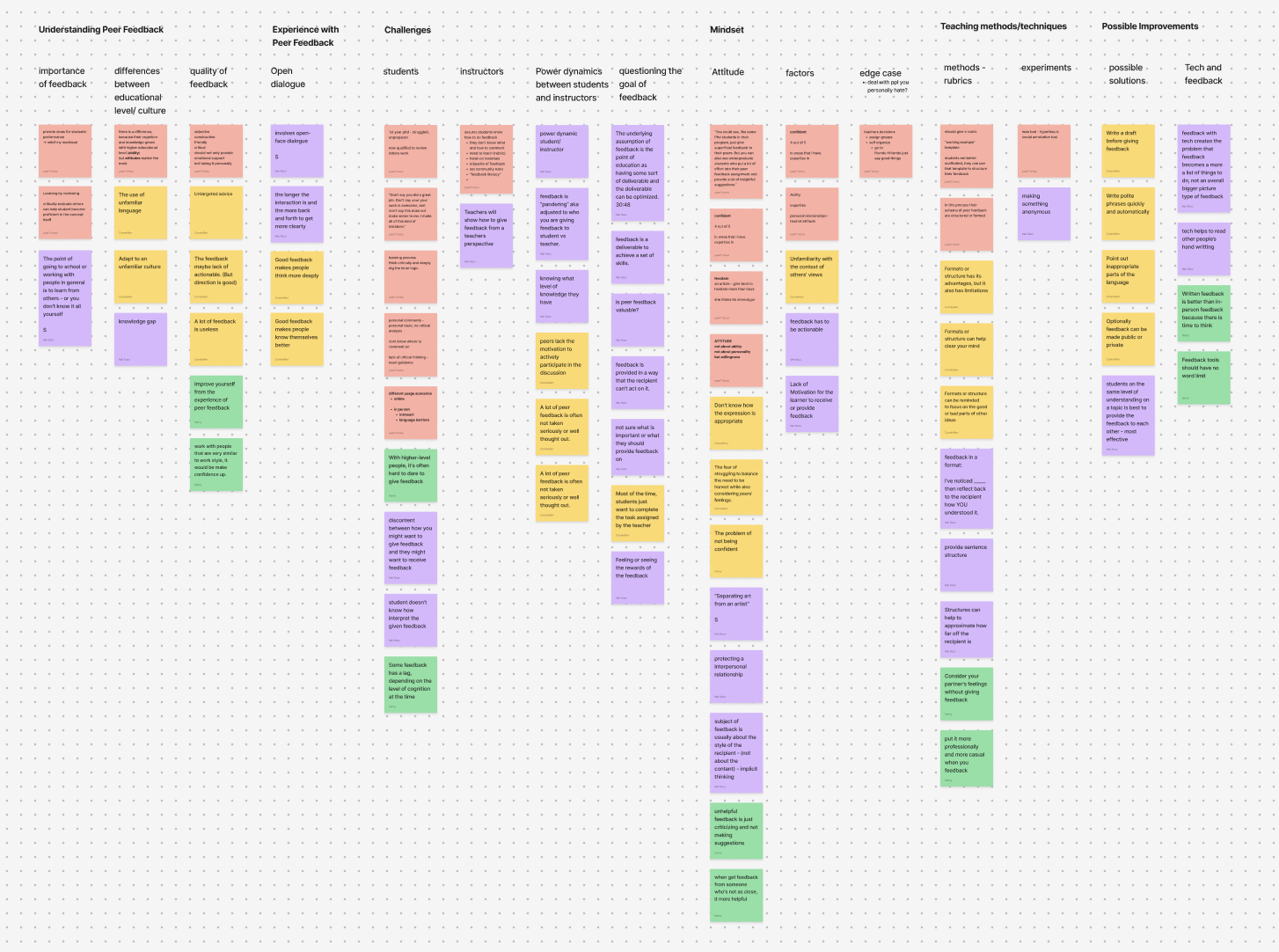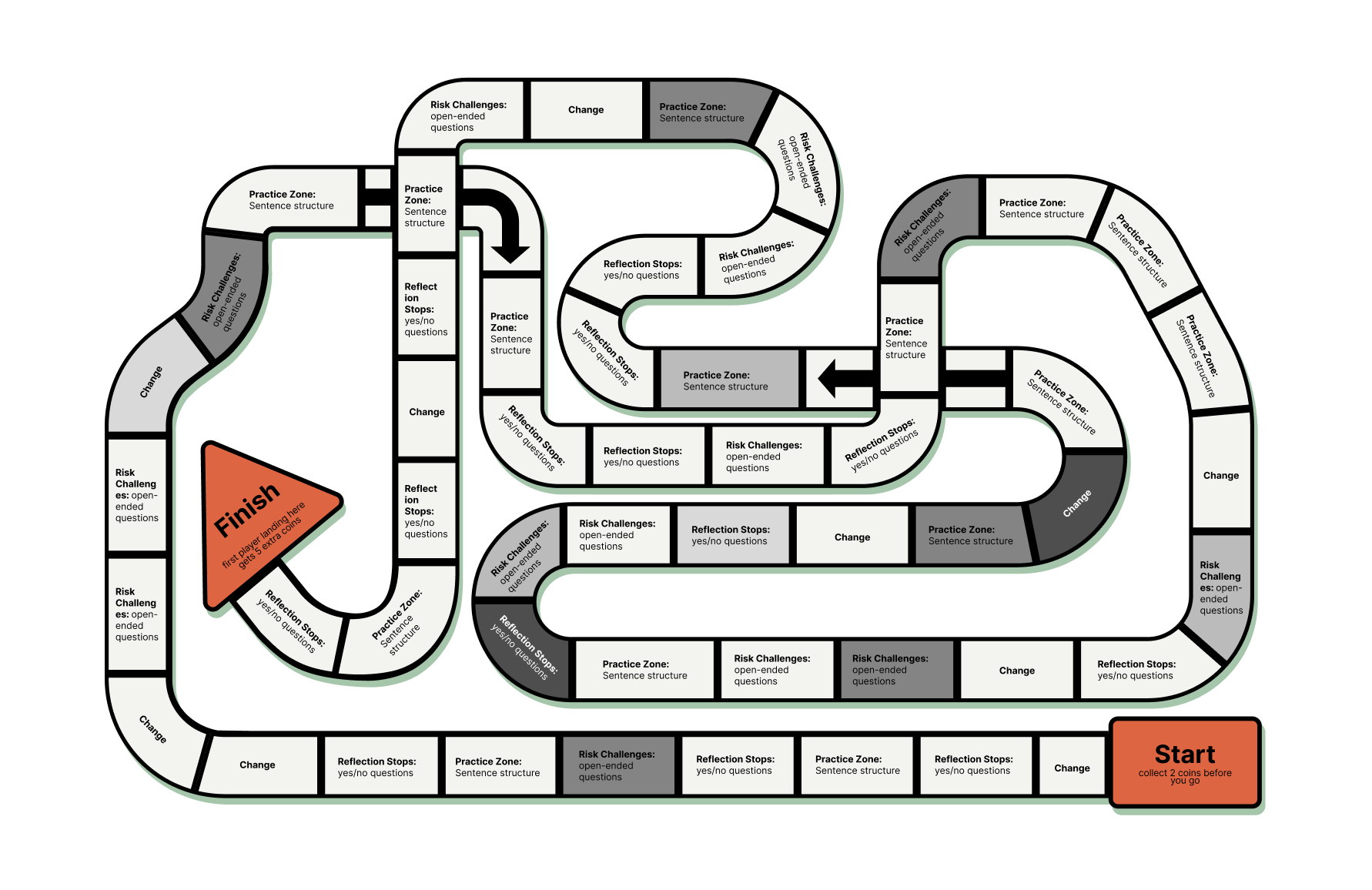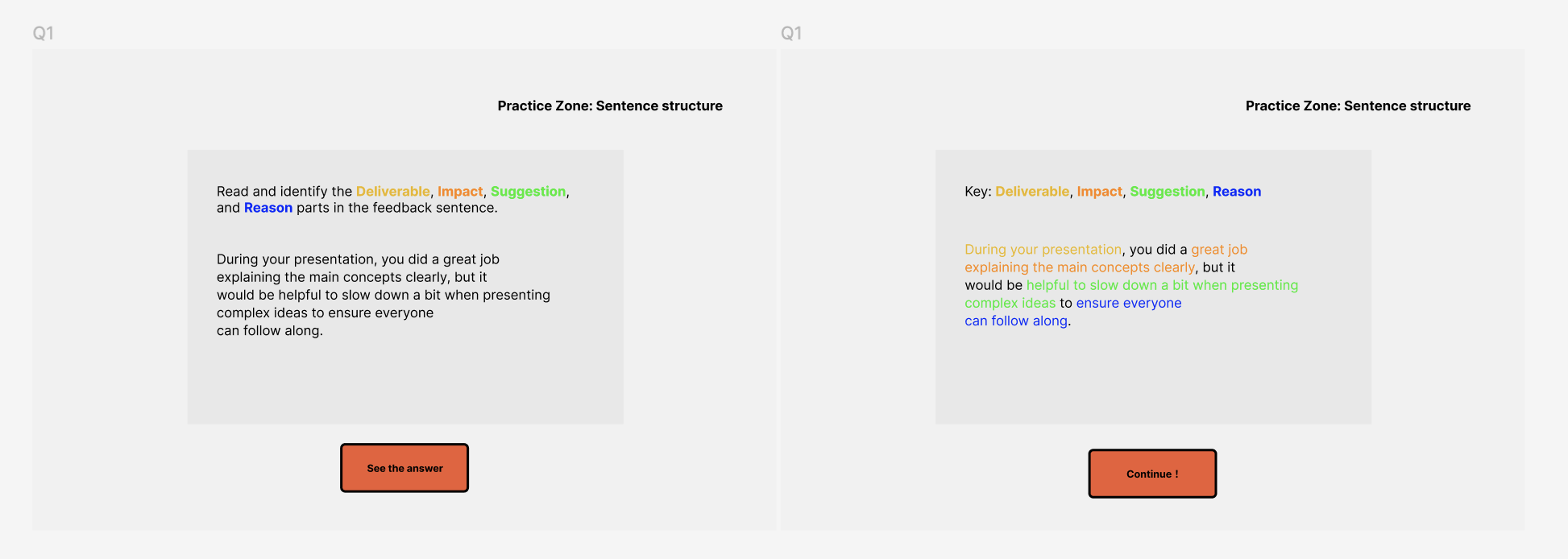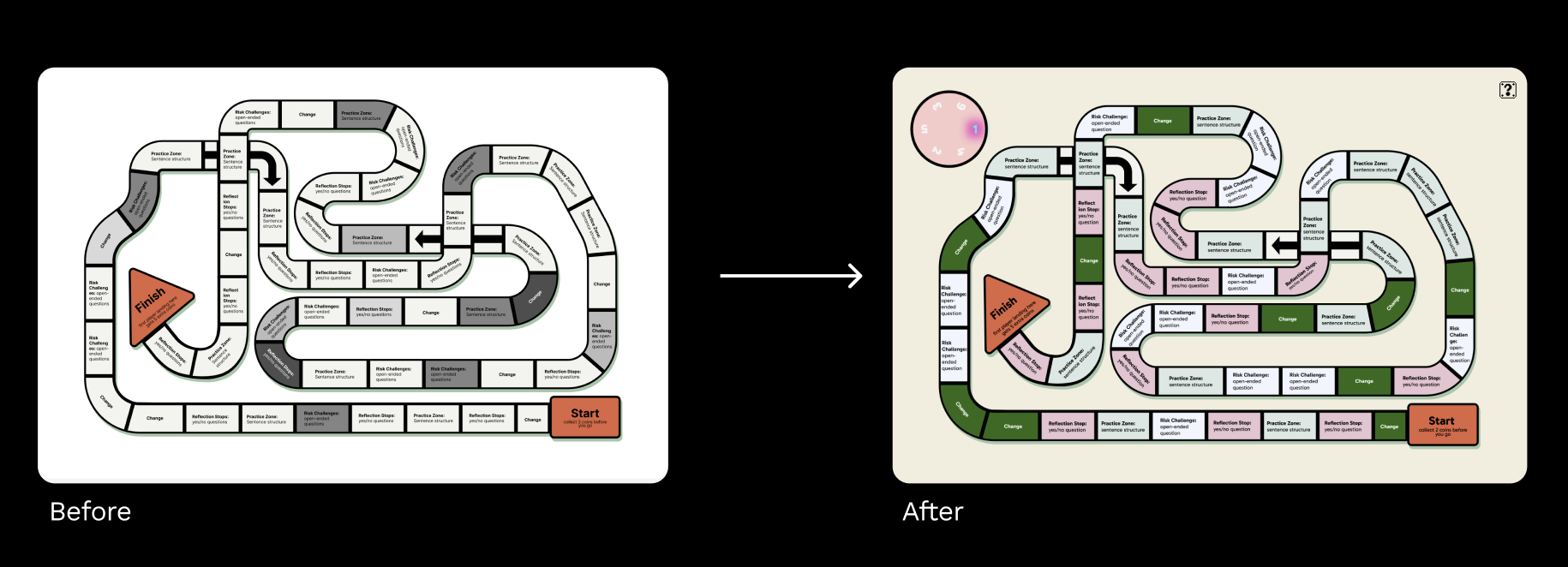Feed
Forward-Opoly
UX Case Study
Teammates at NYU
Farong Ren
Yuanyiyi Zhou
Farong Ren
Yuanyiyi Zhou
Feed Forward-Opoly is a digital, game-based strategy prototype designed to help students give constructive feedback, drawing on psychological, evidence-based research to improve both the giving and receiving of feedback. Often, peer feedback can be inconsistent, lack depth, or fail to be sufficiently actionable, which diminishes its effectiveness as a learning tool. It is common among students to struggle with how to give feedback in a helpful and respectful manner, or may be hesitant to critique their peers. This UX research and prototype project takes on those challenges into a fun game.

UX | Research| Prototype | User Testing
Problem Space
Even at the master’s level, students face challenges with providing and receiving constructive feedback. Why is this the case, and why has the U.S. educational system not better supported this real problem? We set out to explore opportunities to improve peer feedback for graduate students in the classroom, so they can have confidence and feel comfortable in open discussions and critiques.
Research
We began our research by interviewing our fellow students, as well as our instructors, to gain different perspectives on the challenge. Our aim was to understand student experiences, identify challenges that affect the quality and facilitation of peer feedback, and learn how the concept of peer feedback can be better supported. This provided us with qualitative data.We also created a survey, which we distributed to a group of people to gather further insights on this topic. The survey consisted of 15 questions, and we received roughly 50 responses with quantitative results.

We then collected our thoughts and created an affinity map to identify common themes and patterns in the responses.
Narrowing down our research, we arrived at two major, connected insights on peer feedback and how to improve it:
Narrowing down our research, we arrived at two major, connected insights on peer feedback and how to improve it:
- Attitude: Students often feel shy or hesitant to give feedback, especially when they feel less knowledgeable or fear offending their peers.
- Quality: Both students and instructors seek feedback that is clear, actionable, and respectful, with a preference for feedback from multiple sources to support better improvement.

Problem Statement
How might we create a supportive environment for constructive feedback in the classroom that recognizes knowledge gaps, reduces fear of criticism, and encourages open communication?
Ideation
My idea stemmed from the need for structured support when giving feedback. I often worried about hurting others’ feelings while wanting to be constructive, so I envisioned flash cards or note cards to help start feedback sentences and make the process less intimidating. This concept became a “Sentence Structure Toolkit” that prompts students to begin with something positive, offer a suggestion, and explain why.
My classmates contributed as well—Farong suggested AI-assisted feedback examples, while Yuanyiyi proposed gamifying the training process to make practicing feedback more engaging.
My classmates contributed as well—Farong suggested AI-assisted feedback examples, while Yuanyiyi proposed gamifying the training process to make practicing feedback more engaging.

Prototype
Lo-fi prototyp

Card types
 Practice Zones: In this zone, payers must correctly complete a feedback sentence by arranging word fragments into a coherent structure. The sentence must follow the order of Deliverable, Impact, Suggestion, and Reason.
Practice Zones: In this zone, payers must correctly complete a feedback sentence by arranging word fragments into a coherent structure. The sentence must follow the order of Deliverable, Impact, Suggestion, and Reason. Reflection Stops: Players read a scenario sentence and determine whether the feedback contains a motivational tone and language that aligns with high-quality feedback principles.
Reflection Stops: Players read a scenario sentence and determine whether the feedback contains a motivational tone and language that aligns with high-quality feedback principles. Risk Challenges: These dark spaces simulate real-world feedback scenarios. In these challenges, players will role-play responses to challenging prompts with a partner. The AI system (the moderator) will evaluate their response based on tone and content.
Risk Challenges: These dark spaces simulate real-world feedback scenarios. In these challenges, players will role-play responses to challenging prompts with a partner. The AI system (the moderator) will evaluate their response based on tone and content.
Iteration
We went through two rounds of prototyping, conducting user testing after each iteration. Based on feedback from users, we refined the design and overall experience, making im
provements aligned with common usability heuristics.
Practice Zone Card

Reflection Stop Card

Risk Challenge Card

While our initial results are promising, further testing is needed to validate and fully enhance the experience. Overall, I thoroughly enjoyed creating this project. The entire user experience case study process was both rewarding and inspiring.
